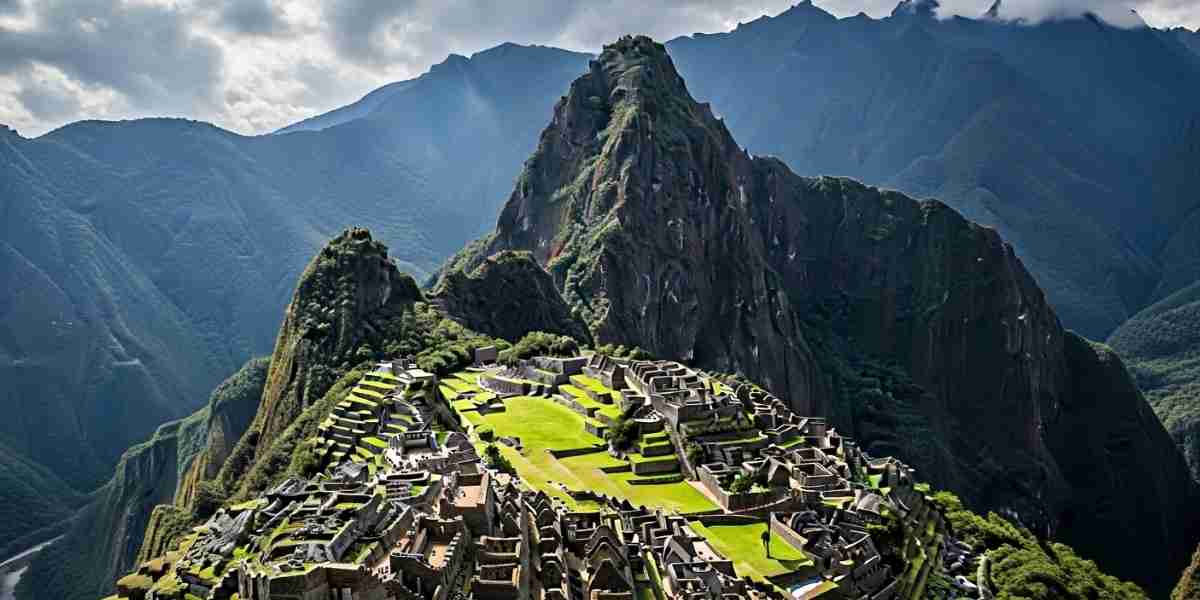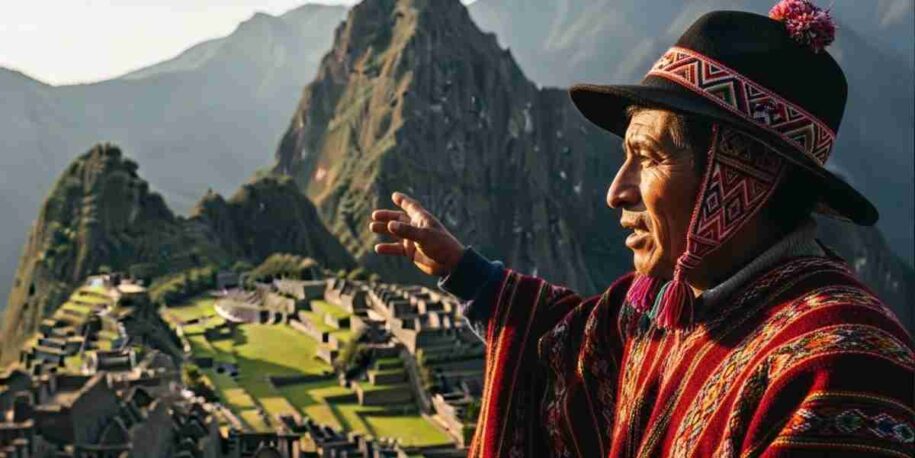The story of the Andean cosmovision and Machu Picchu is one I’ve shared countless times, not on a bustling city street, but with the thin, crisp air of the high Andes filling my lungs, standing on the very threshold of wonder. Travelers arrive at Machu Picchu expecting to be impressed by stone walls and staggering views. They are. But the true essence of the citadel, its soul, remains invisible to the unprepared eye. To truly see Machu Picchu, you must first learn to perceive the world through a different lens. You need to understand the Andean Cosmovision and its connection to Machu Picchu.
This isn’t a religion in the Western sense of the word. Think of it less as a set of doctrines and more as a language—a way of reading the living landscape. It is a worldview where every mountain, river, rock, and star is part of a silent, sacred dialogue. The Incas did not simply build on the land; they built in conversation with it. Understanding this dialogue is the key that unlocks the citadel’s deepest secrets, transforming it from a magnificent ruin into a profound and intentional masterpiece.
The Living World: Pachamama and the Apus
For the people of the Andes, the world is vibrantly alive. This begins with two fundamental concepts. The first is Pachamama, often translated as Mother Earth. It is the tangible, fertile ground that provides life, sustenance, and receives the departed. She is the ever-present feminine energy that nurtures.
The second, and equally important, are the Apus, the great mountain spirits. These are not abstract gods in a distant heaven; they are the colossal, snow-capped peaks that dominate the horizon. Each Apu is considered a powerful, individual protector of the people and lands in its shadow. They are the masculine guardians, sources of water and life, and witnesses to all of human history. The relationship with them is one of deep respect and reverence.
✨ An Expert’s Perspective: When you see a local guide or porter pouring a small portion of their drink onto the ground before sipping, this is what you are witnessing. It is a simple, beautiful act of reciprocity—a toast, first to the Pachamama and the Apus, acknowledging their permission and protection before partaking for oneself. It’s a small gesture that contains an entire universe of meaning.
A World in Dialogue: The Sacred Geography of the Incas
The Incas were masters of what we now call sacred geography. The location of Machu Picchu is no accident; it is a statement. The citadel is nestled in a dramatic bend of the Urubamba River (the Wilkamayu or Sacred River) and is directly surrounded by towering peaks, including the formidable Veronica, Salkantay, and the closer, iconic Huayna Picchu. These were not just mountains; they were the Apus that made this specific location a huaca—a place of immense power and spiritual significance.
The Inca architects designed the city to harmonize with these divine presences. Windows are not just windows; they are frames for a specific sacred mountain. Temples are not randomly placed; their corners align with the solstice sun rising over a particular Apu. This is the Andean Cosmovision made manifest in stone and mortar.
❓ Did You Know… The famous Intihuatana stone, the «hitching post of the sun,» is not just an astronomical calendar. Its shape is believed to echo the silhouette of the sacred Apu behind it. The stone acts as a miniature mountain, a focal point that channels the energy of the landscape and connects the three planes of Inca belief: the heavens (Hanan Pacha), the human world (Kay Pacha), and the inner world (Ukhu Pacha).

Reading the Stones: The Enduring Legacy of the Andean Cosmovision and Machu Picchu
As you walk through the citadel, this understanding transforms the experience. You begin to see the patterns. The Temple of the Sun, with its perfectly curved wall, isn’t just an architectural marvel; its main window perfectly captures the first rays of the June solstice, illuminating the sacred stone within. This was a celestial event of critical importance, a moment where the Incas reaffirmed their connection with Inti, the Sun God.
This worldview turned every journey into a dialogue with the divine. The pilgrimage to a site like this was as important as the destination itself. This perspective is something we strive to share on every trek, especially when guiding travelers along the ancient path. For a deeper look into that transformative journey, you might find our guide to the Classic Inca Trail to Machu Picchu illuminating. It’s not just a walk; it’s a passage through a sacred landscape.
Let me tell you a short story. I remember a traveler, an engineer from Germany, who was fascinated by the precision of the stone-cutting. For days, he spoke only of angles and joinery. On our final day, I asked him to stop looking at the stones and instead look through the windows, to see what the Inca architect wanted him to see. He stood at the window of the Temple of the Three Windows for a long time. When he turned back, his perspective had shifted. «They weren’t just building walls,» he said, «They were building a relationship with the mountains.» He finally understood.
He had learned to read the language of the Andes.
Your Journey of Understanding
To visit Peru and only see stone is to miss the point entirely. The true journey is one of perception. It’s about understanding that for the Incas, the greatest temple was always the landscape itself. Machu Picchu is simply the most sublime sanctuary ever built within it.
The wonder of this place isn’t just in its past; it’s in the enduring wisdom it offers—a reminder that we are part of a world far more alive and interconnected than we often remember. It’s a perspective that can change not just how you travel, but how you see the world when you return home.
Let Us Guide Your Discovery
An experience of this depth requires more than just a ticket; it requires a guide who can translate the silent language of the stones and mountains for you. If you are ready to see beyond the surface and connect with the profound heart of the Andes, we are here to facilitate that journey.

